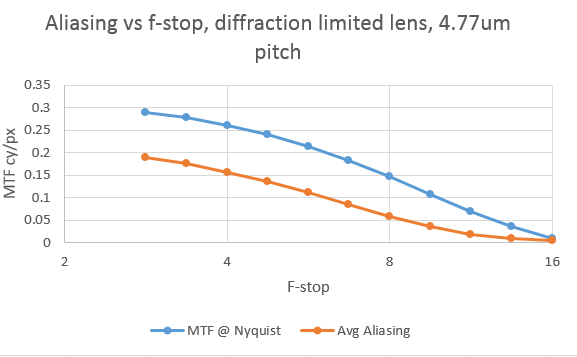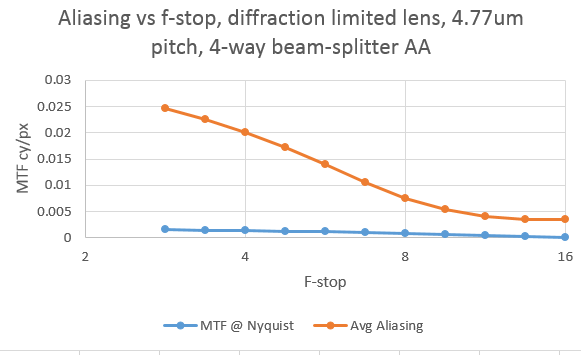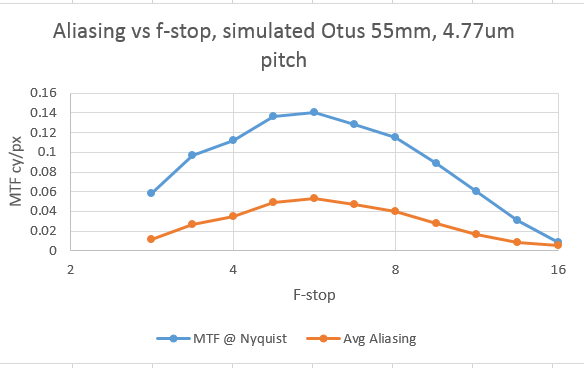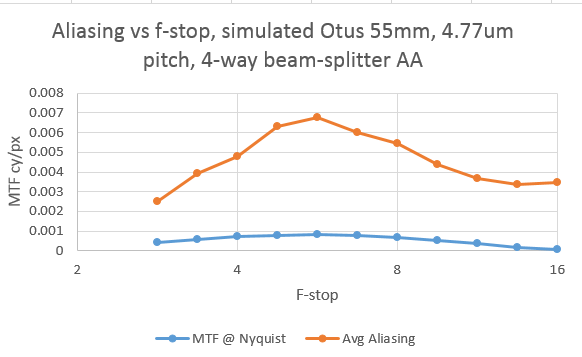For the last couple of weeks we’ve been concentrating on maximizing resolution, as measured by MTF50 or MTF30, and occasionally MTF10. In this post, I’d like to consider what could be a similar metric for aliasing.
We already have one that’s commonly used: the MTF at Nyquist frequency, which I’ll call MTFN. Imatest uses this. From my perspective, it has a few problems. One is that the shape of the MTF curve between the Nyquist frequency of half a cycle per pixel and one cycle per pixel is not determined by MTFN, and all energy in that range can cause aliasing. In particular, some anti-aliasing (AA) filters have zeros near the Nyquist frequency, which can make MTFN look optimistic as a predictor of aliasing artifacts.
I thought that a useful measure might be something I’m calling MTFA, which is the average MTF in the region between 0.5 cy/px and 1 cy/px.
I programmed the camera simulator to calculate MTFN and MTFA for a diffraction-limited lens on a 4.77 um pitch, Bayer CFA camera:
The average aliasing is lower than the MTF at Nyquist.
With a simulated AA filter, the position of the two curves is reversed:
For our simulated Otus 55mm f/1.4 with no AA filter:
We see quite different curves with an AA filter:
It’s clear that the MTFN curves don’t tell the whole story, especially in the case of an AA filter with a zero near the Nyquist frequency. MTFA looks like a better metric for aliasing, if you can only have one.
Does anyone want to propose a different aliasing metric?




Leave a Reply